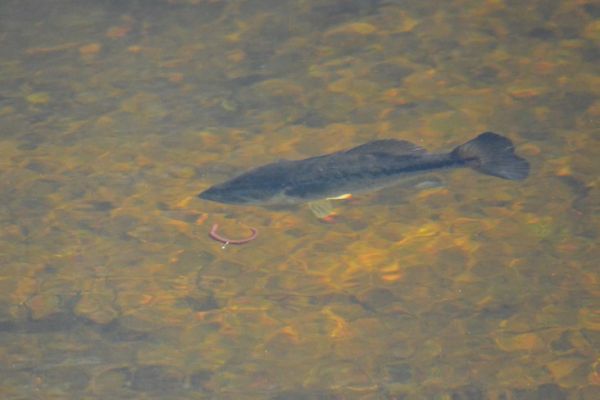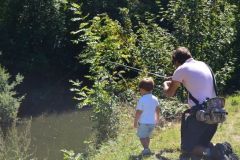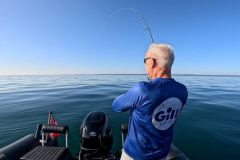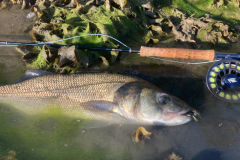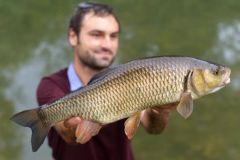What is sight fishing?
Sight fishing involves visually spotting a fish and presenting it with a lure (or bait).
In our case, we'll be using lures. Many species of fish live below the surface or in shallow areas. This is particularly true in summer, when many fish feed on the surface on amphibians, insects, fry...
The clear summer water also makes it possible to fish close to the bottom, which is difficult to spot when the water is murky or high.
This is an itinerant style of fishing where you use light tackle to move around easily. The aim is to spot a fish before it spots you.
Many parameters need to be taken into account to maximize the chances of catching a fish on sight. My grandfather used to tell me when I was a kid: "fish seen, fish caught".
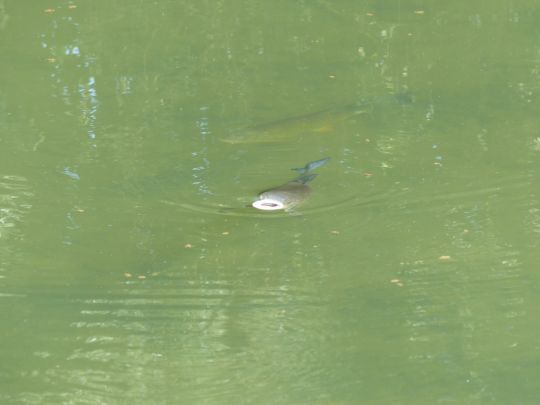
Fortunately, I later found that it was possible to catch fish that had already been spotted. For this, polarized glasses are essential to erase reflections and increase contrast, so that the fish can be clearly identified and distinguished.
A cap or visor will keep the sun's rays off your head. Finally, it's best to wear discreet, not too flashy, colors to avoid attracting the fish's attention.
While prospecting can be carried out quickly, it is important to avoid sudden movements and to avoid standing too close to the bank.
Standing overhanging and in an elevated position makes it easier to spot fish. However, care must be taken when approaching the bank to attempt a cast. Ideally, the sun should be in front or at its zenith, so as not to cast your shadow on the water.
In addition to the sun, it's preferable to have a blue sky whose reflections don't disturb your vision, and for the water to be as smooth as possible: avoid windy days when the wind grazes the water and prevents you from spotting the fish. What's more, when the wind blows, fish tend to sink into the water.
But despite all the precautions you take to spot a fish, is it enough to see a fish and correctly present it with a lure to make it bite? It's not enough!
"Tempting fish
Once you've spotted one or more fish, you've only gone part of the way! We'll often need to take a little time (if the fish will let us) to observe and reflect before suggesting the right lure.
First, analyze the prey on which the fish feed. The ideal is to match the size, shape and color of the prey present.
If it's not obvious or explicit, or the fish aren't obviously feeding, you need to imagine what might seduce them.
Choose soft, unobtrusive, natural lures that are as lightly weighted as possible, mounted on a single hook or small sinker.
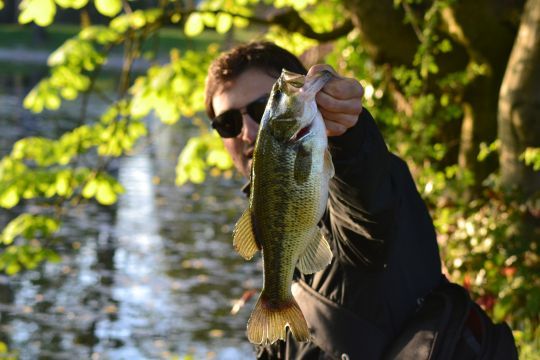
Insect lures are classics like the famous Illex Woodlouse, while fry imitations or worms (like the Illex Flick Shake) are effective on predators like black bass and pike.
Perch are very fond of small invertebrates. Sometimes you'll have to match the prey perfectly to trigger a fish.
The trickiest part is when the fish focus on tiny prey (chiros, small caterpillars, ants...). It's often these devilish trout that have this vice. The hardest part is to find a tiny lure, often weighing less than a gram, which can be propelled precisely and at more than 10 m...
As the lure is light (often weighing less than 5 grams), you need to think carefully about how to cast and how to reach the fish without making any sudden movements that could scare it away. Determine the most favourable casting angle, guaranteeing precision, distance and avoidance of wide, visible gestures.
Under-the-pole or crossbow casting (holding the lure, wrapping the rods and then releasing the line and lure to cast via the simple trigger of the tip) are relevant for sight fishing.
Make sure you can get the fish out of the water and that the bank is not too high above the water...
As for the area to target when casting, I would tend to say "just behind a fish posted on the edge".
The impact of the lure on the water arouses its attention and often triggers a reflex mechanism to attack the lure. If the fish is swimming, in the water or nose to the current, I try to cast in front of it.
If I get several rejections, I try other ways of approaching the fish (if it lets me and doesn't run away first) before changing lures.
In all cases, the lure should be placed on the water in a natural, unobtrusive manner. Avoid splashes or violent landing which can scare fish away.

The same applies to casting too close to the fish. Don't hesitate to use the current or the wind to bring the lure into the path of the fish. Last but not least, avoid too much animation. Only try to gently animate the lure if the fish is reluctant.
Once the fish finally takes hold of your lure, it's time to strike! The adrenalin's pumping, so don't rush and get the timing right. Beginners often tend to strike too early, which often results in an aborted strike as the fish doesn't bite. The strike must be firm but not too violent, otherwise you risk breaking the line.
The right equipment for sight fishing
From the shore, good shoes, a cap, polarized glasses, a bag and a few lures are all you need for what can be very short sessions.
The rod will be light to medium-light for fish such as black-bass, perch, chub, trout... For pike and catfish, you'll need to step up the power to defeat these predators and to cast lures that will be great bites. A fine braid gives greater distance and precision when casting very light lures.
When lures are presented on the surface, nylon is better than fluorocarbon, the latter being sinking. It's best for sight-fishing for fish deeper in the water.
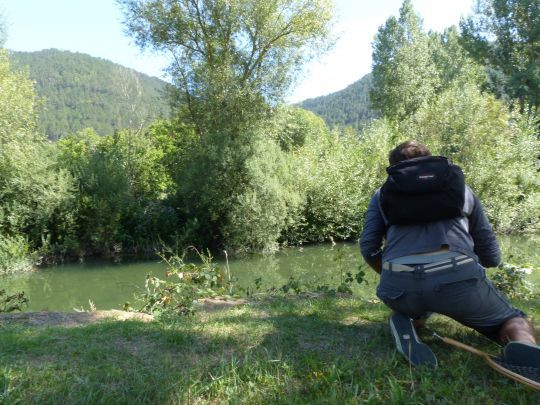
So as not to limit myself too much in terms of catching fish, I use a long-handled landing net as much as possible, so I can get fish out of the water even in the middle of branches or when the bank is high.
Your turn to play
Sight-fishing is exciting at every level: looking for and spotting fish, tempting them, finally seeing them give in and fighting them off! All before our very eyes. It's a real thrill to be had in the summer, with short sessions that can be a mix of strolling and summer fishing.
